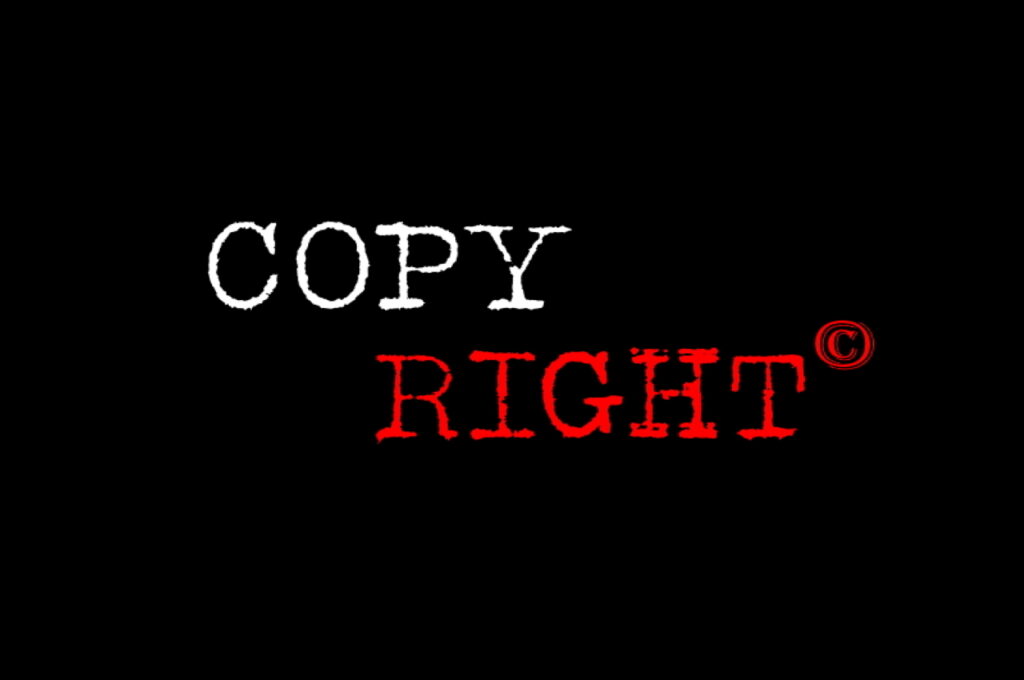
Copyright law in Malaysia
**可以在下方查看本文章的华文版本
Over the years, numerous platforms have been created on the internet for people to share and publish their works including but not limited to songs, videos and photographs. With these platforms and the internet, new opportunities and professions such as “Youtuber”, “Streamer”, “Instagrammer” and “Internet Influencer” have emerged in the market.
Youtubers, as an example, are creating contents and uploading the same on the internet which form a source of our daily entertainment. The contents include among other, make up tutorials, workout videos, gaming videos and even advertisements.
But what happens if youtuber A uploaded a video titled “Types of Adults during Zoom Meeting” (“Video A”) in April 2020. A month later, youtuber B uploaded “12 Types of Adults during Zoom Meeting” (“Video B”) and having watched Video A and Video B, it appears to the viewers that the storyline, filming techniques, message and contents of Video B are similar to Video A.
To what extend does the Malaysian Copyright law protect the videos created by Malaysian Youtubers?
What is Copyright?
Copyright is an intellectual property right that subsists in original works provided for under the Copyright Act 1987. The Copyright Act 1987 enables the owner of the work to enjoy exclusive right to among others, share, publish or even granting permission to others for usage of his/her works.
Pursuant to Section 10(2) of the Copyright Act 1987, copyright will subsist in works which:-
(a) being a literary, musical or artistic work, film or sound recording is first published in Malaysia;
(b) being a work of architecture erected in Malaysia or any other artistic work incorporated in a building located in Malaysia;
(c) being a broadcast transmitted from Malaysia.
Section 3 of the Copyright Act 1987 had also defined “film” means any fixation of a sequence of visual images on material of any description, whether translucent or not, so as to be capable by use of that material with or without any assistance of any contrivance:-
(a) of being shown as a moving picture; or
(b) of being recorded on other material, whether translucent or not by the use of which it can be so shown,
and includes the sounds embodied in any sound-track associated with a film”
Based on the definition in the Act, Video A and Video B fall under the category of film. As such, copyright automatically subsists once the work is made or published in accordance with Section 10 of the Act.
Video A vs Video B
There would be an infringement of copyright if any of the copyright protected work has been reproduced, performed and/or distributed by any other parties without obtaining the necessary consent from the copyright owner.
An individual cannot copy someone’s work which was expended from the author’s own creativity and claim it as their own work. Despite the fact that an individual might claim that the work was created by inspiration or a derivative work, it may be considered as plagiarism.
In this situation, if youtuber B has reproduced, performed and/or distributed Video A without obtaining consent from youtuber A, it will amount to an infringement of copyright. However, youtuber B did not reproduce, perform and/or distribute Video A but adopted the idea in Video A and film its own video, Video B.
Section 7(2A) of the Copyright Act 1987 specifically excludes ideas, procedures, methods of operation and mathematical concepts from copyright protection.
In Telmark Teleproducts Australia Pty Ltd v Bond International Pty Ltd (1985) 5 IPR 203, the Defendant had made an advertising film which is similar to the Plaintiff’s advertising film by using similar or even identical visual images and sounds. The Plaintiff then sought an injunction from the Court to refrain the Defendant from showing the advertising film. The Federal Court held that in view that the Defendant had made its own film and had not copied from the Plaintiff’s advertising film, the Defendant had not infringed the Plaintiff’s copyright in the film.
Despite youtuber A produced the “Types of Adults during Zoom Meeting” video, the idea to create the video would not be protected by copyright because only the video is protected by copyright. In other words, a video creator having the same idea as youtuber A could create “Types of Adults during Zoom Meeting” video without infringing youtuber A’s copyright.
However, the fact that the contents of Video A and Video B have such similarities, it may be argued that youtuber B has copied youtuber A’s expression of idea.
By: Lee Su Ting
DISCLAIMER: This article is for general information only and should not be relied upon as legal advice and/or legal opinion. Messrs Yeoh & Joanne accepts no liability for any loss which may arise from reliance on the information contained in this article.
马来西亚的版权法
多年来,互联网上创造了许多平台,供人们分享和发表他们的作品,包括但不限于歌曲、视频和照片。有了这些平台和互联网,市场上出现了新的机遇和职业,如“视频网站内容创建者(Youtuber)”、“Streamer”、“Instagrammer”和“互联网影响者”。
例如,视频网站内容创建者创建内容并上传到互联网上,这构成了我们日常娱乐的来源。内容包括化妆教程、健身视频、游戏视频甚至广告。
但是如果A视频网站内容创建者在2020年4月上传了一則題目为《視頻会议時的态度》的视频(视频A)。然而一个月后,B视频网站内容创建者上传了一则题目为《12种在視頻会议時的态度》(视频B),在观看了视频A和视频B后,观众觉得视频B的故事情节、拍摄技巧、信息和内容都与视频A相似
马来西亚版权法对马来西亚人民所制作的视频给予了多大程度上的保护?
什么是版权?
版权是是一种存在于原创作品中的知识产权,并于《1987年版权法》规定。《1987年版权法》使作品的所有者能够享有独占权利,分享、出版甚至允许他人使用他/她的作品。
根据《1987年版权法》第10(2)条,版权将存在于以下作品中:-
(a) 作为先在马来西亚发布的文学、音乐或艺术作品,电影或录音;
(b) 在马来西亚建造的建筑作品或者在马来西亚的建筑中包含的任何其他艺术作品;
(c) 从马来西亚传送的广播。
《1987年版权法》第3条还将“电影”定义为“将一系列视觉图像固定在任何描述的材料上,无论是否半透明,以便在有或没有任何设计帮助的情况下使用该材料:-
(a) 作为移动画面放映;或者
(b)记录在其他材料上,不论该材料是否透明,而使用该材料可如此显示,
并且包括包含在与电影相关的任何音轨中的声音”
根据该《1987年版权法》的定义,视频A和视频B属于电影范畴。因此,一旦作品根据该法第10条制作或出版,版权就自动存在于该作品。
视频A与视频B
如果任何受版权保护的作品未经版权所有者的必要同意而被任何其他方复制、表演和/或传播,将构成对版权的侵犯。
任何人都不能复制由作者自己的创造力制作的作品,并声称它是他们自己的作品。尽管,一个人可能声称作品是灵感创造或衍生作品,但这可能被认为是抄袭。
在这种情况下,如果A视频网站内容创建者在未经B视频网站内容创建者同意的情况下复制、表演和/或传播视频A,将构成版权侵犯。然而,B视频网站内容创建者并没有复制、表演和/或分发视频A,而是在视频A中采纳了该想法或概念,并用其拍摄了自己的视频B
《1987年版权法》第7条(2A)明确将想法、程序、操作方法和数学概念排除在版权保护之外。
在Telmak Teleproducts Australia Pty Ltd & others v Bond International Pty Ltd & others (1985) 5 IPR 203案件中,被告制作了一部与原告的广告影片相似的广告影片,使用了相似或甚至相同的视觉图像和声音。原告随后向法院申请禁令,禁止被告放映该广告影片。联邦法院认为,鉴于被告制作了自己的广告影片,并且没有复制或抄袭原告的广告影片,被告没有侵犯原告在该广告影片中的版权。
尽管A视频网站内容创建者制作了一则题目为《在視頻会议時的态度》的视频,但制作该视频的想法或概念并不受版权保护,因为只有该视频会受版权保护。换句话说,一个和A视频网站内容创建者有相同想法的视频创作者可以在不侵犯A视频网站内容创建者版权的情况下创作题目为《視頻会议時的态度》的视频。
然而,事实上视频A和视频B的内容有如此相似之处,可以说B视频网站内容创建者抄袭了A视频网站内容创建者的想法表达方式。
文章来自于:
李淑婷律师(Lee Su Ting)
免责声明:本文仅供参考,不应作为法律建议和/或法律意见。Yeoh & Joanne律师事务所不会承担因依赖本文所含信息而产生的任何损失的责任。
copyright law coronavirus covid19
- by admin
- on May 9, 2020

